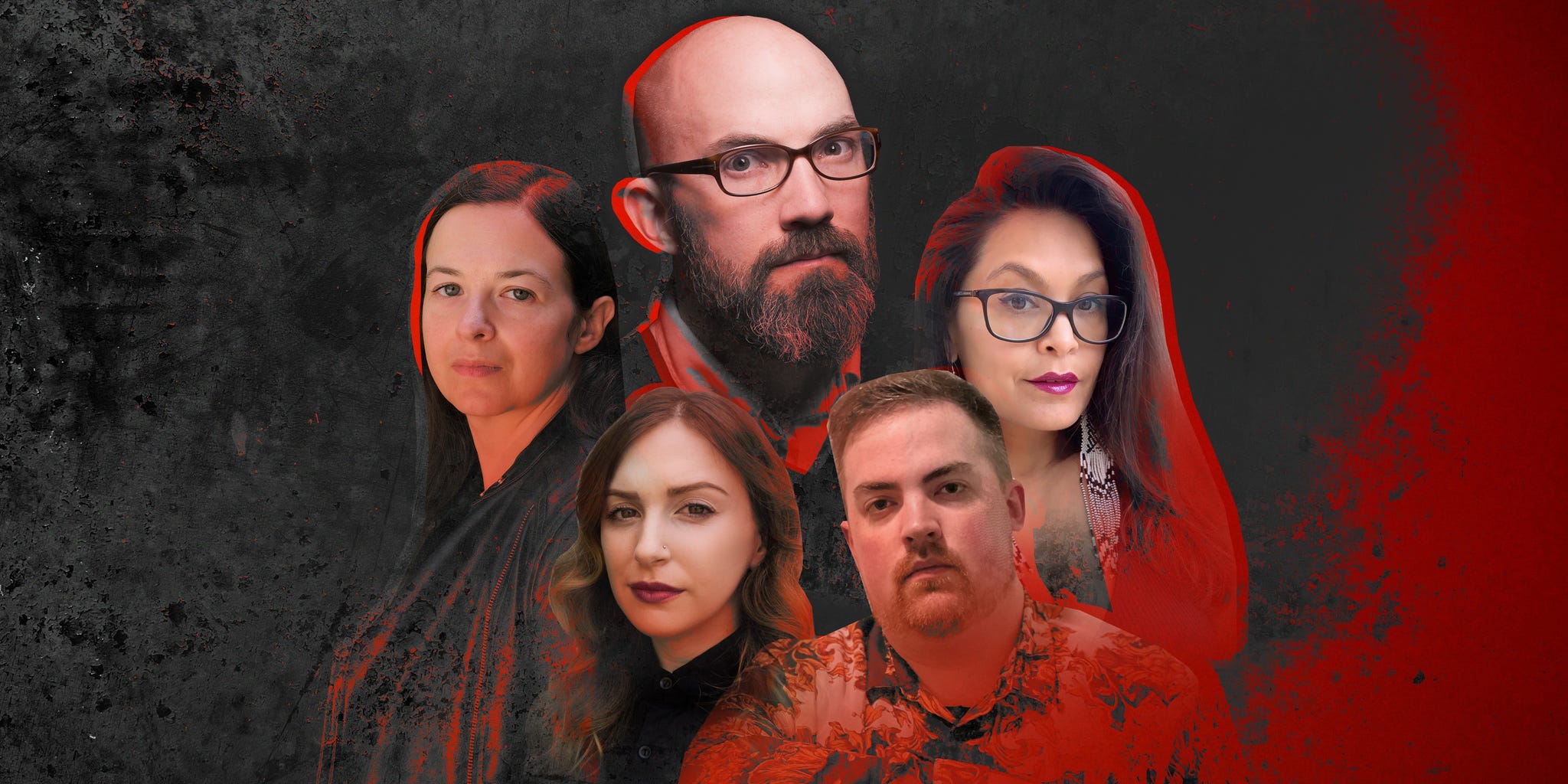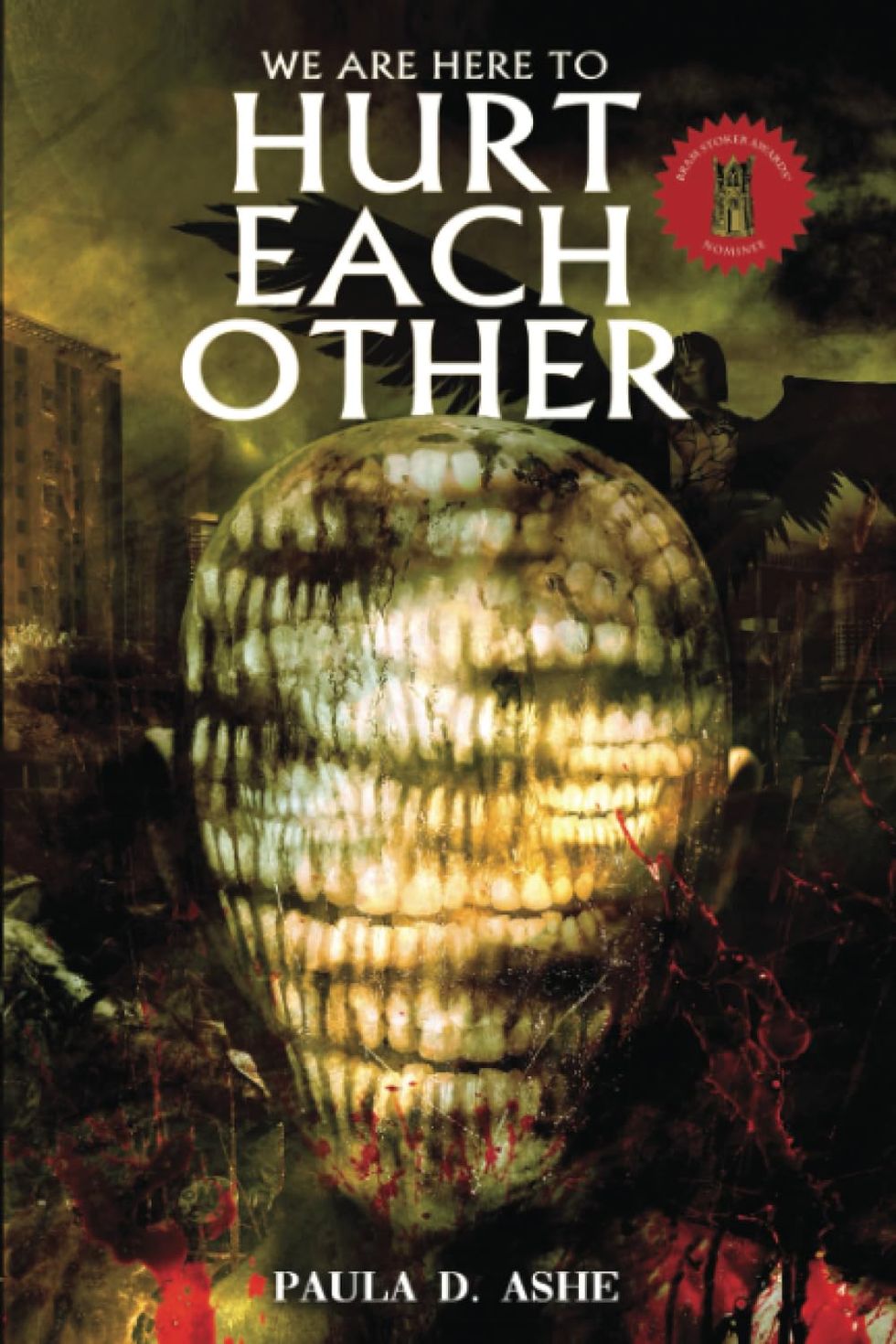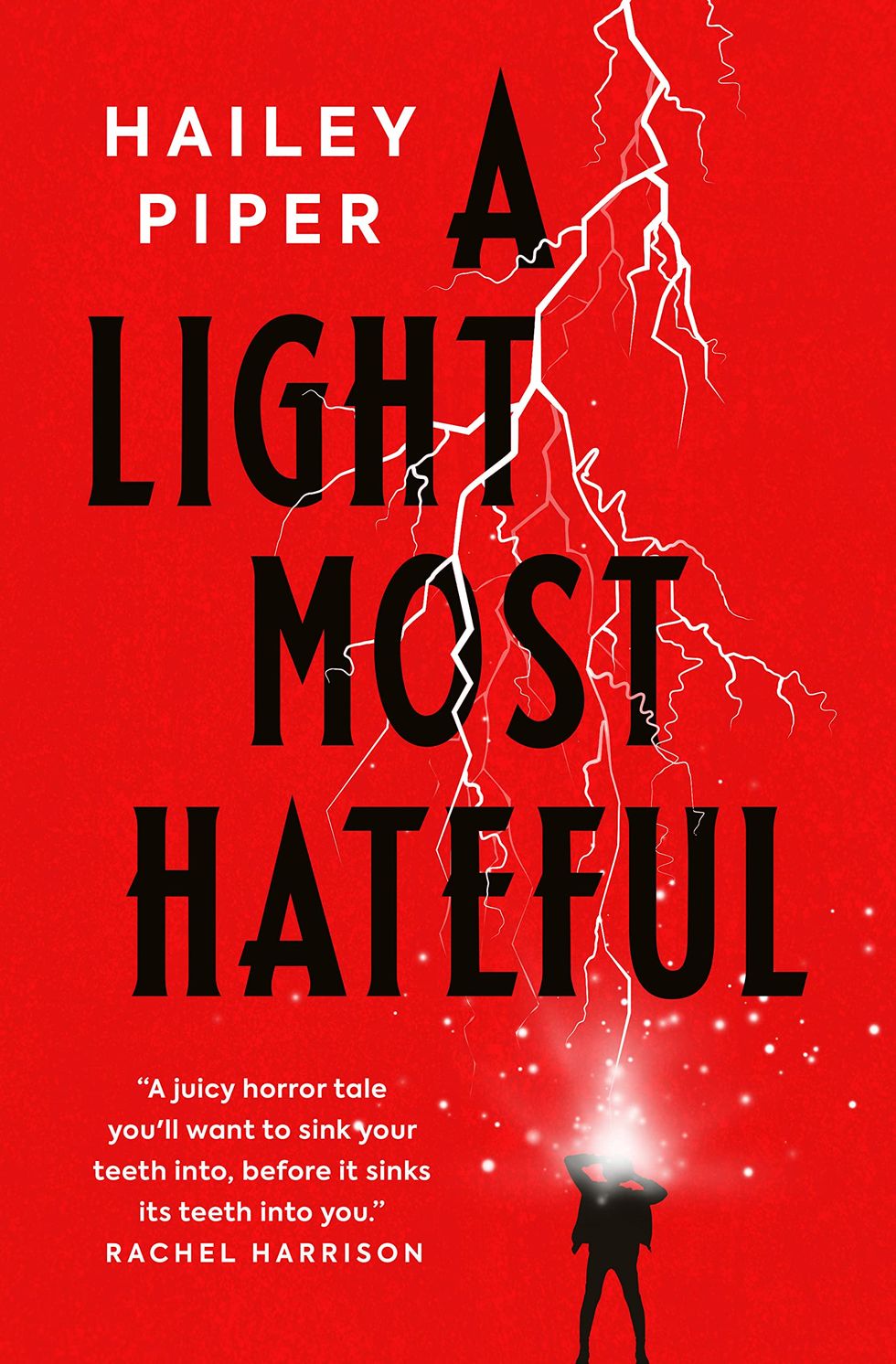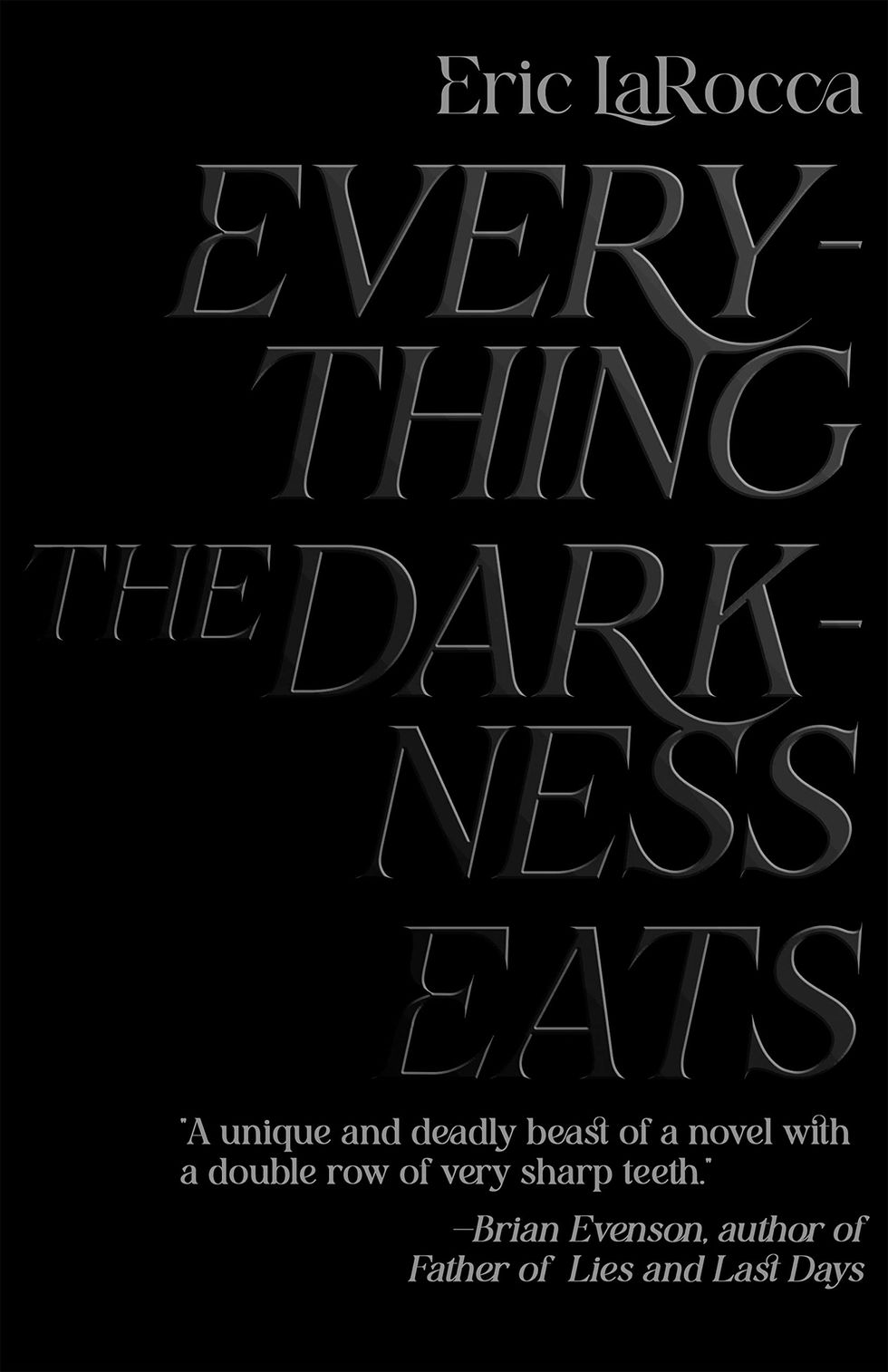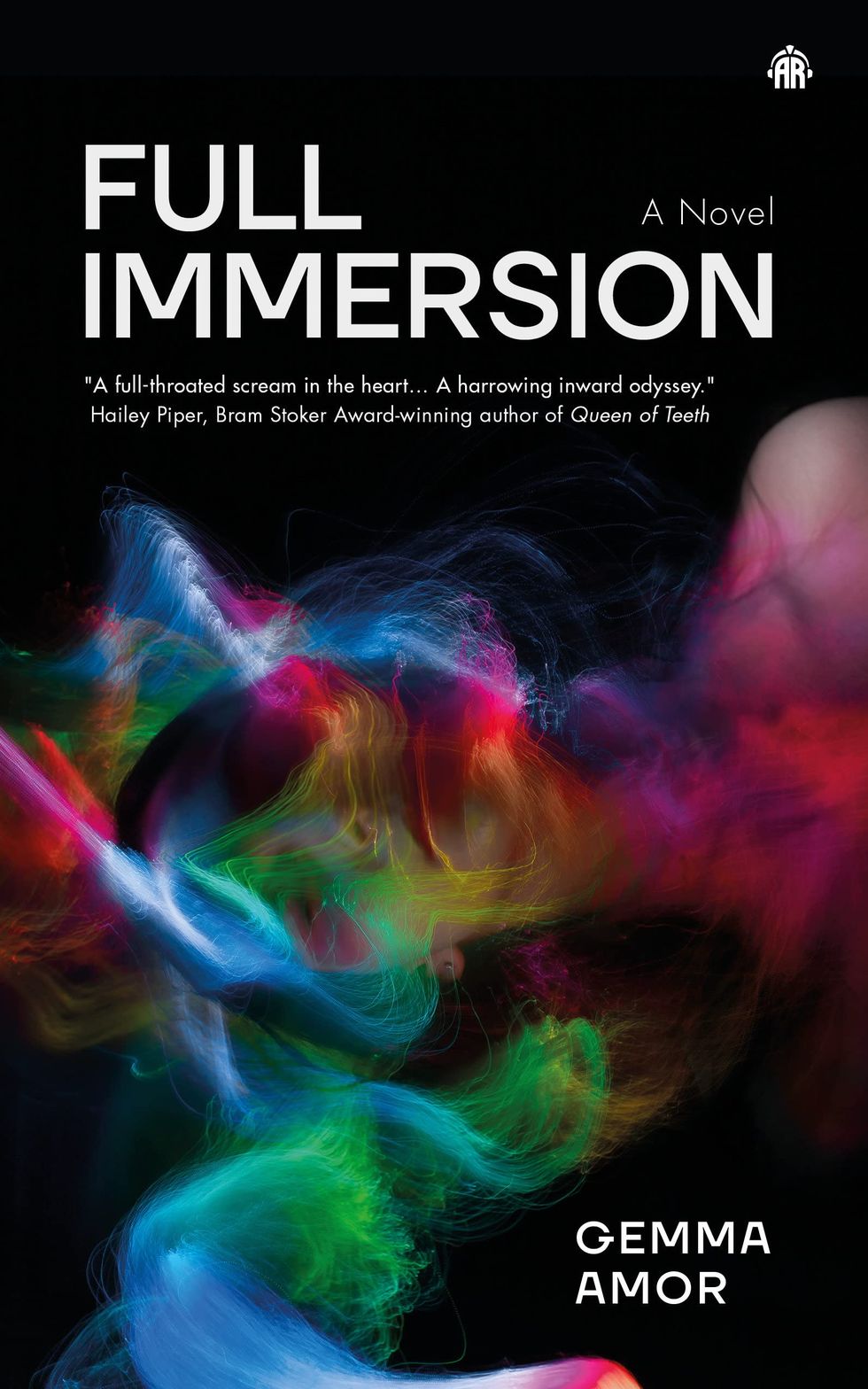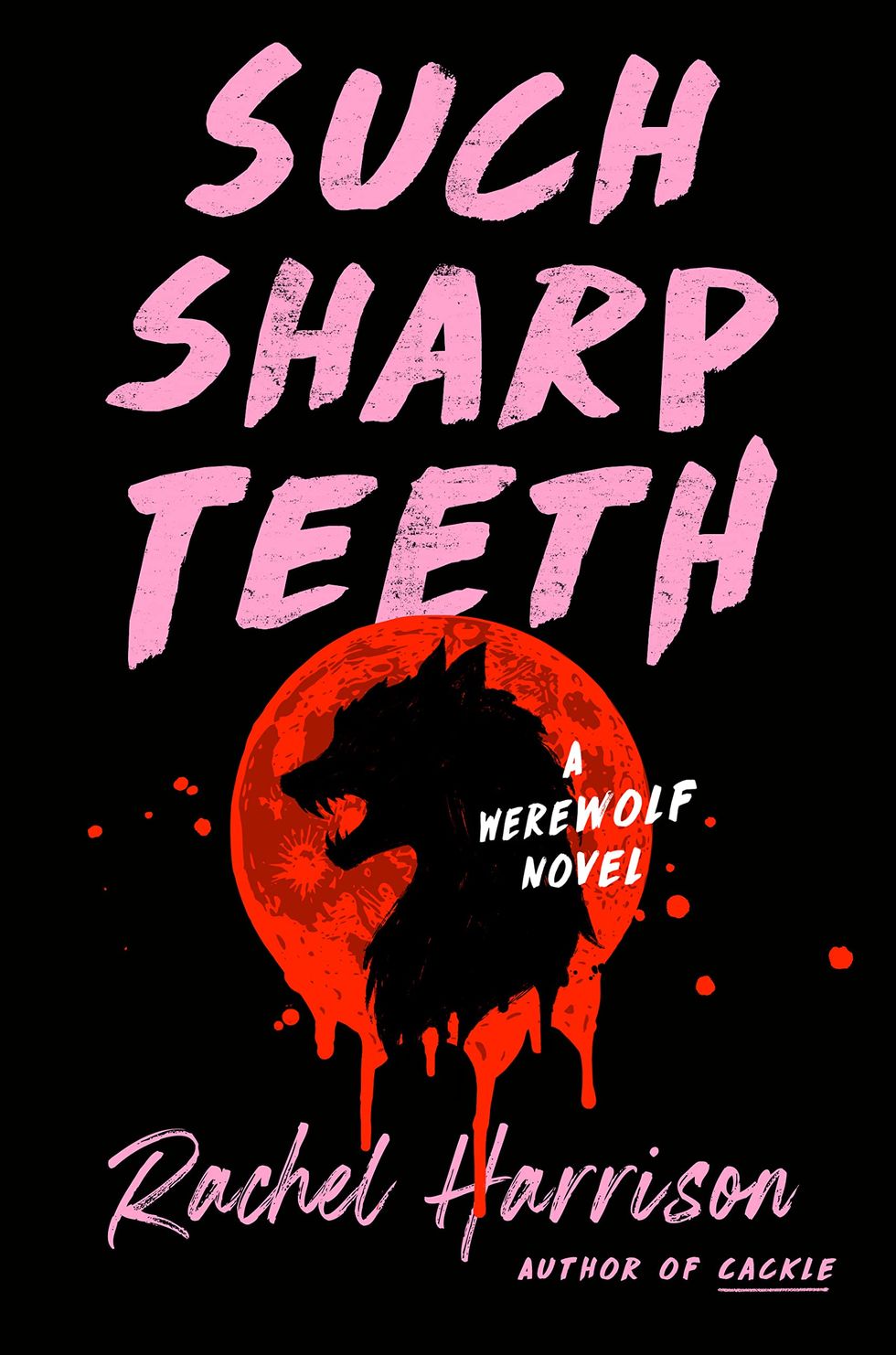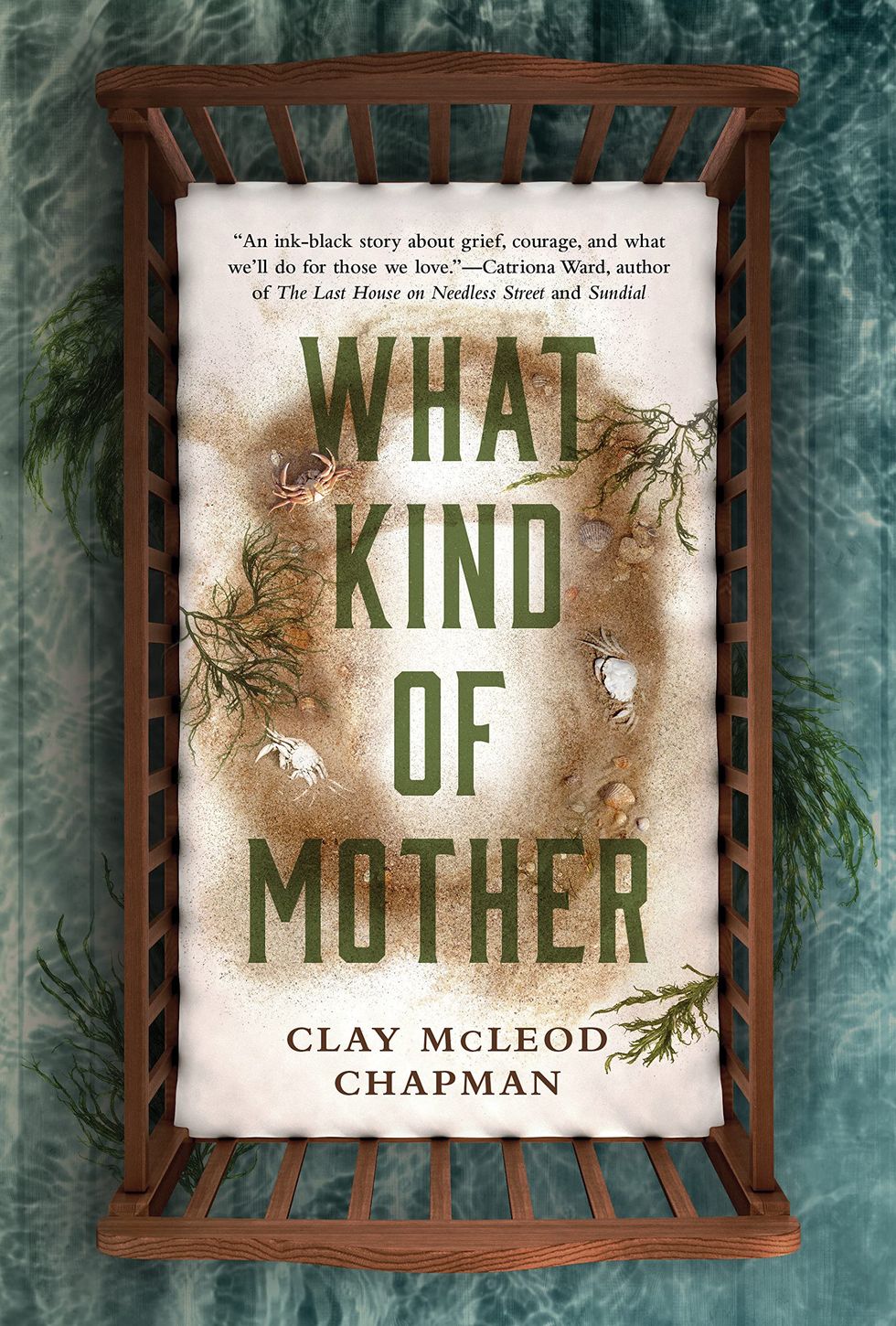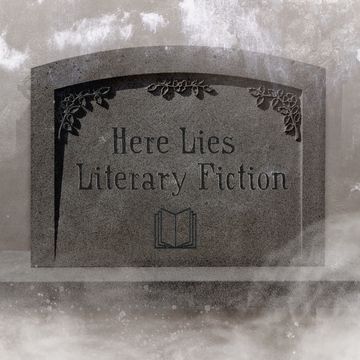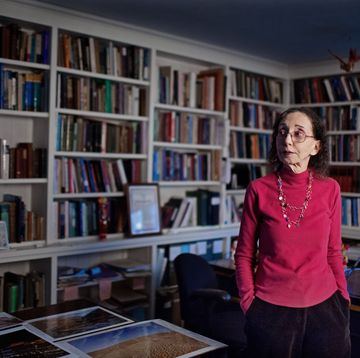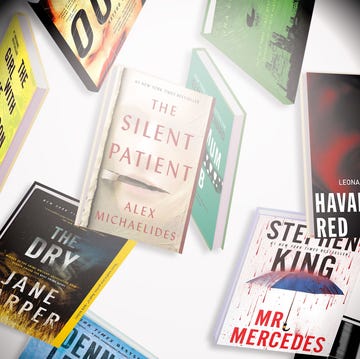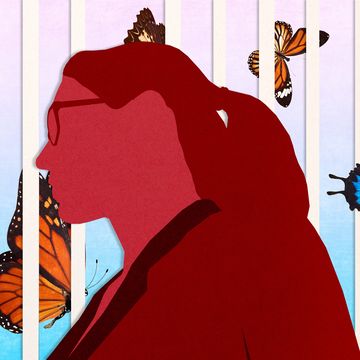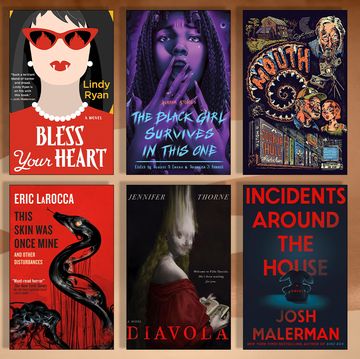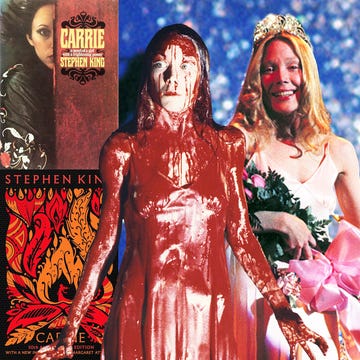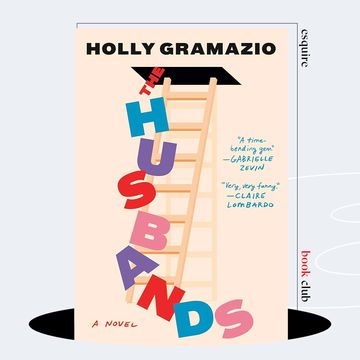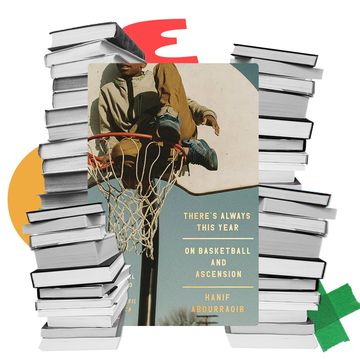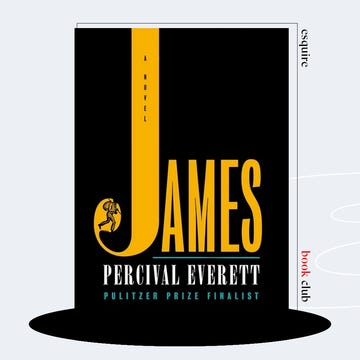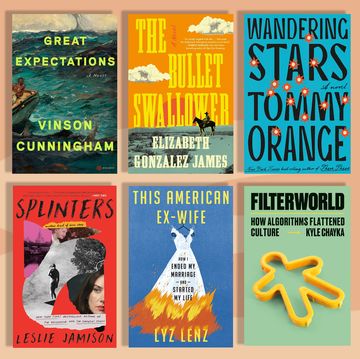We’re living in scary times. The world hasn’t felt this unsafe and uncertain for at least a generation. Common sense would dictate that in such circumstances, horror stories should fall out of favor. After all, who wants to read about monstrous things when the real world is showing its teeth?
Ignore logic. Horror stories have always risen like whey in a crisis. Audiences in the Great Depression flocked to Universal monster movies; horror radio became all the rage during World War Two; the dark end of the Sixties ushered in Rosemary’s Baby, The Exorcist and Stephen King’s Carrie. In the wake of 9/11, the found-footage boom succeeded in recreating a first-hand point-of-view on terror.
What’s different this time, however, is the scale and variety of the crises we face. Pandemics, financial insecurity and inequality, assailed human rights, and the alarming popularity of terrible leaders, all overshadowed by the existential terror of an overheating planet—where do you even begin to translate such a range of anxieties into a single genre?
The answer, it seems, is to refresh said genre. Extend the boundaries, include new voices, reconsider what horror is and what it can do. The “horror boom” of the ‘80s and early ‘90s was overwhelmingly pale and male, and though that groundbreaking cohort wrote unforgettable books, they largely shared a white, western, middle-class point of view. The stories may have been fantastic, but they exposed only a narrow slice of horror’s potential.
That era of Stephen King, Dean Koontz, and Clive Barker ended in the mid-to-late ‘90s. Sure, King is still a phenomenon, but he exists somewhere north of genre, a planet with his own gravity. Then, for a decade or so, horror languished, popping up only occasionally in the refracted postmodern dread of Bret Easton Ellis, Chuck Palahniuk, and Lauren Beukes. Since the first half of the 2010s, Paul Tremblay, John Langan, Catriona Ward, Victor LaValle, Stephen Graham Jones, and Grady Hendrix have taken what they had learned at King’s knee and applied a literary varnish. They began the process of chiseling away at the horror monolith, and they continue to bring in new approaches, different styles, and freedom to experiment. It is a dazzling, dizzying time to be a horror fan.
Now, though, a new generation of writers is taking a shake at the status quo. From independent releases to small presses to big traditional publishing deals, they are shaping horror’s next golden age. This Generation H is made of writers with their own intentions and their own inimitable voices. As a podcaster who interviews horror authors every week, I’m lucky enough to have spoken with many of them. They have left me thrilled at the future prospects for my favorite literature. This week, when Esquire is putting fiction front and center, it seems like the perfect time to introduce readers to the writers who will define horror for years to come. Some you may have read, some you may not yet be aware of, but they are here… and they are hell-bent on taking over.
Cassandra Khaw may have the most realistic take on why horror is booming again: capitalism. Khaw suggests, “Investors are beginning to realize that horror is profitable, as opposed to that odd little thing that gothy weirdos like me obsess over.” They are correct—horror sells. Since the turn of the century, it’s dominated TV in shows like True Blood, The Walking Dead, and The Last of Us; now, the publishing industry is catching up. Of course, as Khaw points out, “It also wouldn't be exploding in popularity if it weren't for the fact the genre is filled with brilliant fucking people who know how to speak to the human heart.”
Khaw is one such brilliant fucking person, and someone who in many ways represents the heterogeneity at the heart of the new horror community. Based in New York but born in Malaysia, Khaw is non-binary, a writer of video and RPG games as well as fiction. Their approach to horror is the very opposite of horror tradition. Heritage plays its part. As they explain, “Where I grew up, horror was everywhere. Every kid had a ghost story of their own, every house a haunting. The supernatural was simply a thing, and we were all hungry to hear about everyone else's mythos.” That hunger persists in their writing. Khaw’s breakthrough novella, Nothing But Blackened Teeth, is rooted in Japanese folklore and takes place in a Heian-era mansion, colonized by an obnoxious wedding party who fall afoul of a resentful yōkai. This year’s The Salt Grows Heavy reinvents European mermaid lore to horrific ends. It has been rapturously received and demonstrates the reach of Khaw’s “vagabond” imagination.
There is a confidence to Khaw’s fiction; a refusal to be pigeonholed as a specifically South East Asian or Malaysian writer. It’s a responsibility that authors often tussle with: the desire to speak for their own culture, undermined by publishing’s habit of electing singular spokespeople for an entire community.
“I feel there is an attitude of ‘there can be only one,’” V. Castro explains. “Despite there being 62 million Latine folks in the US alone, you can count on your fingers the Latine writers getting their work out into the mainstream. In horror, even fewer.”
Though there may be few, they are mighty. Castro is part of a vanguard of female Latine horror writers. Along with contemporaries Silvia Moreno-Garcia (Mexican Gothic), Isabel Cañas (The Hacienda), and Cynthia Pelayo (Loteria), Castro is finding ways to wrestle familiar stories to the floor and invest them with authentic Latine influences. Her fiction is full of fire, violence, and heady, bloody eroticism, but it is haunted by unfamiliar threats. Goddess of Filth begins with a recognizable set-up: dumb kids and a séance, but the menace they conjure is far older than any Catholic demon. Likewise, her latest, The Haunting of Alejandra, is a familiarly Gothic tale of generational trauma and female oppression, but the specter of La Llorona is an especially effective embodiment of those themes. It’s an intentional amalgamation, and it’s working—Castro has charted a career from niche presses to a mainstream publishing deal with Del Rey.
“I feel very privileged,” she says, “but also a great responsibility to hold the door open for others. When this gig gets tough, this keeps me going.”
And it does get tough. Even the most cursory conversation with an upcoming horror author makes that clear. Writing is a precarious career, made doubly-so by the threat of AI and the vast array of content vying for readers’ attention. Budgets are tightening across the industry. Alison Rumfitt wrote one of last year’s most acclaimed horror novels, Tell Me I’m Worthless, yet when asked about her sense of financial security, I can almost feel the eyeroll through email: “Well, I currently live in a flat with a leak above my bed that has created a stain like a giant eye. I work a service job four to six days a week in a cinema. I do not feel secure.” Paula D. Ashe echoes the sentiment: “I attach no financial security to my writing because the system is too volatile.” As a Black female author of extreme horror, Ashe would have had scant chance of finding a mainstream audience in previous decades. Now, she is “heartened that change is happening, but there remains more to be done, because the overwhelming majority of coverage about horror focuses on white creators.” Her plan is simple: “Just to continue creating what I create. You're welcome to join me. At the same time, fucking pay me.”
Readers should hope that publishers reward Ashe and Rumfitt appropriately, because both writers are pushing boundaries in vital ways. Ashe’s collection, We Are Here to Hurt Each Other, contains some of the most gorgeously upsetting sentences I’ve read in years. An acolyte of Clive Barker and his provocative, pain-soaked prose, Ashe crafts stories that make you feel soiled, but there is such beauty in her delivery. Trigger warnings abound: the collection is full of sickening violence, sexual depravity, and desecration, but Ashe is confident that “audiences are hungry for something different, challenging and raw. Horror is getting nasty again, nasty for the right reasons.”
One of those reasons is to address and counteract the problems that Ashe sees facing writers (and the world). Amongst others, she lists “the myopic enthusiasm for human art to be replaced by AI plagiarism machines, the embracing of fascism in too many parts of the world, and the rampant transphobia and homophobia.”
Rumfitt’s Tell Me I’m Worthless certainly addresses the latter half of that list. It’s a landmark work of Queer horror destined to be a future classic—and perhaps the best depiction yet of the malice embedded in post-Brexit British society. Ostensibly a novel about a haunted house, it is one of the first horror stories to truly confront the transphobia and seismic gender battles that are sending our culture into spasms. It’s graphic, bleak, and taut, but not without a mordant humor. In short, it’s quintessentially British horror, even while it’s putting the boot into British culture. Rumfitt will return later this year with her second novel, Brainwyrms, which begins with an act of transphobic terrorism and promises to be “shocking, grotesque and downright filthy… while exploring the depths of love, pain, and identity.” I can’t wait to read it.
As a trans woman, Rumfitt concedes that there are pros and cons to being a British writer: “Over here we don’t yet have such a concerted effort to remove us from public life in the manner that has been going on in Florida. But we also still don’t have a particularly friendly or well-meaning press.” She points to the fact that despite the rapturous reception to her novel, few magazines or newspapers showed interest. Horror readers, Rumfitt suggests, do seem to be more open to trans writers.
Indeed, Generation H is notably queerer than any previous cohort. Sure, the 1890s may have been a peak decade for Queer metaphor in horror, but the truth was always obscured behind locked doors and ageless portraits. Things weren’t all that much better a century later, when Clive Barker and Poppy Z. Brite were conspicuous outliers to the cis mainstream.
If Rumfitt is leading the charge in the UK, Hailey Piper and Eric LaRocca are forging new avenues for Queer horror in the US. Piper is a case study for successful career-building in the genre. Starting as an indie author with titles such as The Possession of Natalie Glasgow, Queen of Teeth, and The Worm and His Kings, she has since gone on to sign a multi-book deal with Titan Books. Her first book with Titan, A Light Most Hateful, comes out this October. Piper is one of the hardest-working writers in horror, and her fiction is remarkable in its range. Her work consistently examines physicality, but often in a joyous celebration of what body horror can do. For Piper, “Body horror is the core of everything. It explores every possible and impossible nightmare. Our bodies get sick and wounded, our cells deteriorate, and we play host to other bodies, be they babies, viruses, or parasites. All of horror stems from body horror.”
Eric LaRocca no doubt agrees. His word-of-mouth smash, Things Have Gotten Worse Since We Last Spoke, delights in the flesh. It also announced him as an immediate talent. Like Piper, he has gone on to secure a book deal with Titan (who are really doing great work in supporting this new generation), and his latest novel, Everything the Darkness Eats, promises to bring his trademark extremity to a Stephen King-ian small town setting. It sounds great, but he’ll have his work cut out for him to surpass the nastiness of his breakout hit. That slim novella takes the form of an online conversation, in which a darkly exploitative relationship takes form. Rotten meat is eaten, tapeworms are cultivated, babies are harmed in exceptionally awful ways, and the refrain “what have you done today to earn your eyes?” entered contemporary horror parlance.
Prior to release, LaRocca worried that horror readers would be resistant to a story oriented around Queer characters, particularly those in a BDSM relationship. Now he is more confident that sexuality plays a vital role in the horror genre. For LaRocca, “Horror remains an overtly horny genre. A place of exploration that allows us to not only confront our deepest and most forbidden fears, but better understand our true selves.”
Truth and self are equally key to a novel at the other end of the genre. Where LaRocca’s fiction is explicit, the terror of Ally Wilkes’ All the White Spaces is concealed. LaRocca aims for contemporary minimalism; meanwhile, Wilkes wrote a historical doorstopper about suffering and masculinity in the Antarctic at the end of the Golden Age of Exploration. Think Dan Simmons’ The Terror meets King’s The Shining, with a little cosmic frisson. Yet despite being the polar opposite (pun very much intended), Wilkes’ novel also frames LaRocca’s impulse toward understanding the self. Her protagonist is a trans man who has stowed away upon an antarctic expedition in search of the heroism that he thinks defines manhood. What he and his shipmates discover in the frozen wastes is the emptiness of traditional glory and the truth of something deeper. Before this all gets too tied up in progressive politics, I should emphasize that it also has ghosts and a wonderfully obscure monster. But it’s the context that makes the book sing.
Wilkes has a penchant for historical torment in cold places. Her next book, Where the Dead Wait, takes place at the other end of the world in the wake of a failed Arctic exploration that degenerates into cannibalism. I’m already salivating.
If Wilkes writes fiction that dissects masculinity, her compatriot, Gemma Amor, has had recent success with a novel that explores female experience. Amor is a fearlessly candid writer, and Full Immersion is a high-concept thriller about a woman who undergoes radical treatment for postpartum depression. Suspended in a simulation, she must navigate a confusion of realities, pursued by a dark entity. It reads like the best episode of Black Mirror that Charlie Brooker hasn’t yet made. It’s unsettling, bewildering, but ultimately uplifting: proof that horror can be an enriching genre when done right.
The strength of horror, according to Amor, is that it “explores the full spectrum of the human condition.” The list of names already mentioned backs up her point, but she points out that being a “woman in horror” can be “incredibly limiting, both in terms of perception and definition.” She points to well-meaning readers who have told her they’re saving her work for the annual ‘Women in Horror Month. “It’s an odd form of support,” she says, “where I am essentially erased for the other eleven months of the calendar year because of an online trend that’s designed to lift writers like me up.”
Back across the Atlantic, Rachel Harrison is sculpting a career from the various despairs of womanhood. Her 2020 debut, The Return, was initially swallowed up by the pandemic, but has grown in stature as one of the very best and most disquieting novels of recent years. Its depiction of the bonds and burdens of female friendship is razor-sharp, and Harrison finds genuine innovation in the trope of the haunted hotel. It’s an astonishingly strong debut.
Her follow-up, Cackle, examines witches, while Such Sharp Teeth reads like a mash-up of Gone Girl and The Howling. She’s back next year with “a vampiric take on Thelma and Louise” in So Thirsty. One by one, Harrison is taking the totems of horror and recalibrating them as reflections of the contemporary female experience.
Does she care about being pigeonholed? Not at all.
“I’m happy to have carved out my own little corner in the horror world,” she says. “If someone was to say about me, ‘she’s a woman horror writer, her book covers are pink, her characters put on mascara,’ that’s not really something I can afford to concern myself with. As for horror, I love it here. My wardrobe is all black anyway.”
I began this survey by suggesting that the white, straight, male perspective had dominated horror for too long. Though Generation H is correcting that imbalance, there is still phenomenal work coming from the genre’s traditional center. Nat Cassidy’s Mary: An Awakening of Terror reads like a riposte to King’s Carrie; Cassidy has the audacity (and the skill) to write convincingly about perimenopause. Philip Fracassi’s A Child Alone With Strangers and this summer’s The Boys in the Valley also riff on King’s comfortable, old-school storytelling chops, but with an updated sense of menace and genre-fluidity.
Clay McLeod Chapman has been quietly building momentum with a series of original, increasingly dark novels. The Remaking and Whisper Down the Lane were both well-received examinations of truth and urban legend in American culture (the latter does a great job of reframing the ‘80s Satanic Panic as a contemporary version of The Crucible.) He moved into a different emotional register, however, in last year’s Ghost Eaters. It’s a nostalgia trip to the late-’90s indie-nihilism of Fight Club and Donnie Darko, in a story about addiction and mushrooms that let you see the dead. His forthcoming What Kind of Mother has been described by peers—including many of those mentioned above—as his best and most upsetting novel yet. According to Rachel Harrison, it will “take your breath away and break your heart and chill you to the bone.” Such a visceral reaction is particularly important to Chapman, who’s determined to keep pushing the emotional intensity of his fiction. If anything, he argues, it might be a successful tactic to combat AI. “If literature gets an artificial chill from our sentient counterparts, I'd love to head in the other direction,” he says. “Make something so raw and exposed, it could only be human. Let out that primal scream across the page.”
Maybe that’s what really characterizes Generation H. Not age, ethnicity, or class; nor sex or sexuality or gender. Maybe it’s a shared need to scream into the void, into the face of all that is wrong with the world. Yes, identity politics are inextricable from contemporary culture, perhaps more so in horror than elsewhere—after all, the genre has so long been predicated on the idea of Otherness as monstrousness that some corrective representation is overdue. To readers who resent the idea of horror being politicized in this way, I simply say this: horror has always been a political genre. Since its inception in the 18th century, horror fiction has refracted social reality through a glass darkly. The difference is that those who were for so long treated monstrously (and as monsters) are now writing their own stories. And the genre is better for it.
But it does a disservice to each of these writers to reduce them to their identity markers, or to any single agenda. Instead, Generation H is perhaps best considered as a loose collective, representing different ethnicities, genders, and sexualities for sure, but brought together in response to an ever-worsening world, in which living—and writing—seems harder than ever.
Ally Wilkes says it plainly: “The world around us is scarier than ever, so it makes sense to me that people would find comfort in horror.” V. Castro writes horror because “it can ask and sometimes answer the darker questions we have in this life.” For Cassandra Khaw, these stories are “something that says, 'I understand why you're afraid,' and 'it's okay, I'm scared too. We were all kids once, huddled up together, listening to ghost stories in the dark.’”
There is a beautiful universality to be found in the work of these writers. It’s the urge to plant a bloody flag and say, “I was here,” and then to mark that spot on the map for whomever comes next. And someone will come next. That’s the thing about horror: there is always something new lurking around the next dimly-lit corner. Generation H is changing the game, but it won’t stop here. Already I’m aware of other writers quietly making their names in anthologies and zines and the occasional word-of-mouth debut. I can’t wait to see what the next decade produces. Optimism has been in short supply these last few years, but as Eric LaRocca says, “When I think of the future of horror, I am so utterly filled with hope.”
